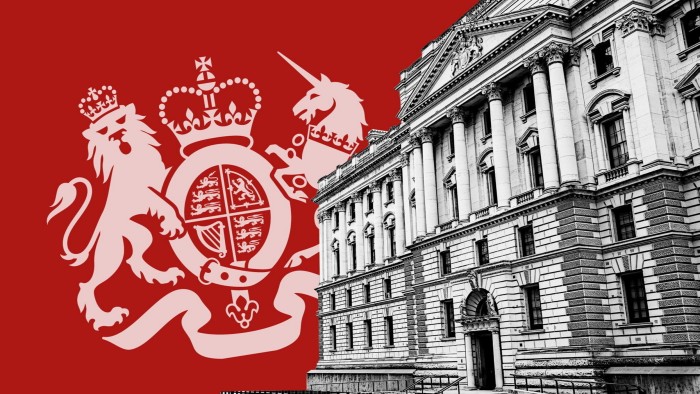Unlock the Editor’s Digest for free
Roula Khalaf, Editor of the FT, selects her favourite stories in this weekly newsletter.
UK 10-year borrowing costs rose to the highest level since the global financial crisis and sterling sank on Wednesday as an intensifying bond sell-off threatened the Labour government’s ability to meet its self-imposed budget rules.
The 10-year gilt yield climbed as much as 0.13 percentage points to 4.82 per cent in early afternoon trade — its highest level since 2008. Yields move inversely to prices.
UK borrowing costs have risen much faster in the UK so far in 2025 than other big economies, as investors worry about the government’s heavy borrowing needs and the growing threat of stagflation to the economy.
“It’s a global sell-off, but being compounded in the UK by the toxic combination of a flatlining economy, sticky inflation and a worsening fiscal outlook,” said Andrew Pease, chief investment strategist at Russell Investments.
The yield on the 30-year gilt — which on Tuesday rose to its highest level since 1998 — also continued to climb, touching 5.37 per cent.
Sterling fell 1.2 per cent against the dollar to $1.233, its weakest level since April. In the stock market, the domestically focused FTSE 250 index fell 1.7 per cent.
Chancellor Rachel Reeves left herself a slender £9.9bn of headroom against her revised fiscal rules in the Budget even after announcing a £40bn tax-raising package that aimed to “wipe the slate clean” on the public finances.
Since then, increases in government debt yields have put that budgetary wriggle room under threat. The level of bond yields is an important determinant of the budget headroom given its implications for the government’s interest bill, which exceeds £100bn a year.
The latest increase in rates on Wednesday means the chancellor’s headroom against the current budget rule has now been wiped out, according to Ruth Gregory at Capital Economics.
If the higher yields are sustained, it could force the chancellor to announce corrective action to keep budget policy on track. On March 26, the Office for Budget Responsibility announces a new set of fiscal forecasts that will factor in bond yield movements.
“The chancellor has no room left against her fiscal rules given the upward move in yields, and the market is questioning what the next move is from here,” said Ben Nicholl, a senior fund manager at Royal London Asset Management. “Raising taxes or cutting back on departmental spending will only put further downward pressure on growth, which in turn puts pressure on tax revenues when borrowing is already high.”
The chancellor has pledged to make significant tax changes only once a year, in a single “fiscal event”. The next of these is not expected until the autumn. As such, any corrective action in March is more likely to come in the form of spending curbs, the officials have signalled.
Restoring the headroom back to its October levels via tighter spending plans would mean curbing real-terms growth in day-to-day departmental spending from 1.3 per cent a year to just under 1 per cent, said Ben Zaranko, an economist at the Institute for Fiscal Studies think-tank.
The government is due to announce the results of a multiyear, departmental spending review around June.
“We are in the danger zone” when it comes to the chancellor’s budget headroom, Zaranko said. “Growth and interest have moved in the wrong direction for her.”
Adding to the problems facing the government are poor GDP figures, which will also play into the OBR forecast.
The watchdog is likely to trim its 2 per cent growth forecast for 2025 given weak recent data, economists predicted. The impact on the budget headroom will, however, depend on whether the OBR determines the loss of output is permanent or can be made up later in the parliament.
“The forthcoming Spring Statement, Spending Review, and Autumn Budget will likely be painful sequels to the chancellor’s historic inaugural budget,” said Sanjay Raja, an economist at Deutsche Bank.
The recent gilt market slump comes after weeks of climbing yields on longer-dated US Treasuries and German Bunds, though Wednesday’s sell-off was most acute in the UK.
Analysts said the simultaneous sell-off in gilts and the pound — which typically benefits from higher yields — carried echoes of the market fallout from Liz Truss’s ill-fated “mini” Budget in 2022.
“What is going on in the gilt market has undermined confidence in the pound a little,” said Chris Turner, head of financial markets at ING, saying some investors were dumping recent bets that the pound would be more resilient than other major currencies against the dollar.
“FX traders are looking at the gilts market and are worrying whether there is something similar going on to 2022,” Turner said.
Read the full article here

